Key Measures to Continuously Enhance the Supply Security of Grain and Other Essential Agricultural Products
China unveiled its No. 1 Central Document for 2025 on February 23, 2025, entitled “Opinions on Further Deepening Rural Reform and Steadily Advancing Comprehensive Rural Revitalization.” As the first policy statement released by China’s central authorities each year, the document is regarded as an indicator of policy priorities and outlines key tasks for further deepening rural reforms and taking solid steps in advancing comprehensive rural revitalization.
The document consists of six parts, focusing on ensuring the supply of grain and other important agricultural products, consolidating the achievements of poverty alleviation, developing local industries, advancing rural construction, improving the rural governance system, and optimizing the rural resource allocation system.
Ye Xingqing, former Director of the Rural Economy Research Department at the Development Research Center of the State Council, believes that the primary task for advancing rural revitalization and building a strong agricultural nation is to continuously improve the supply security of grain and other important agricultural products. In 2024, China’s grain production surpassed 0.7 trillion ton for the first time. The goal for 2025 is not only to maintain this level but also to strive for further increases. To this end, the document has deployed measures across several critical aspects, including stabilizing the sown area for grain, enhancing large-scale yield per unit area, supporting the stable development of animal husbandry, strengthening the protection and quality improvement of arable land, promoting advancements in agricultural science and technology, bolstering agricultural disaster prevention and mitigation capabilities, perfecting support policies for grain production, coordinating domestic and international markets, constructing a diversified food supply system, and reducing grain loss.
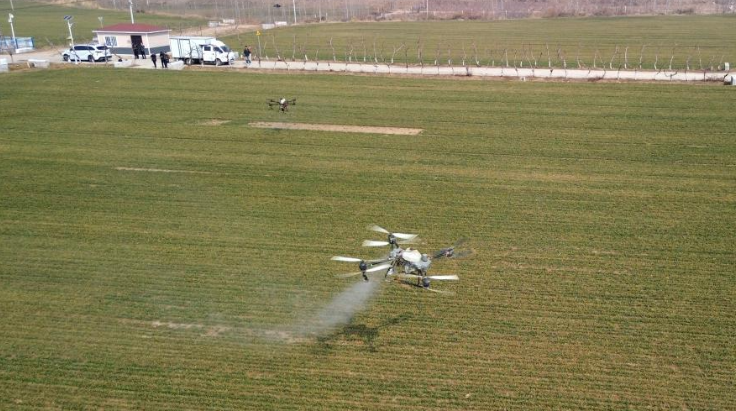
A plant protection drone operating in a wheat field in Yucun Town, Xintai City, Shandong Province. [Photo by Xusu Hui/Xinhua]
1. Enhancing Large-scale Grain Yield
Liu Luxiang, the Chief Scientist of the National Wheat Industry Technology System of China, pointed out that increasing yield per unit area is a gradual process that must be promoted from small-scale experimental fields to large-scale production, involving technological exploration, research and development, and the promotion of new practices. Currently, China’s cultivated area for grain crops is at a historical high, and constraints on arable land and water resources are increasingly severe. With limited potential to boost production merely by expanding cultivation areas, the primary path to enhancing capacity is to improve large-scale yield per unit area. In 2023, the Ministry of Agriculture and Rural Affairs launched a nationwide initiative to boost the yield per unit area of major crops such as grain and edible oil, aiming to translate high-yield techniques from experimental fields into actual field performance.
The key to addressing this challenge lies in integrating quality land, quality seeds, sound farming practices, and optimal timing—tailored to local conditions and specific crops. Agricultural experts must guide large-scale farmers at critical stages of production, promoting comprehensive technological solutions that extend from villages to households and fields, thereby driving balanced yield and income increases across vast areas.
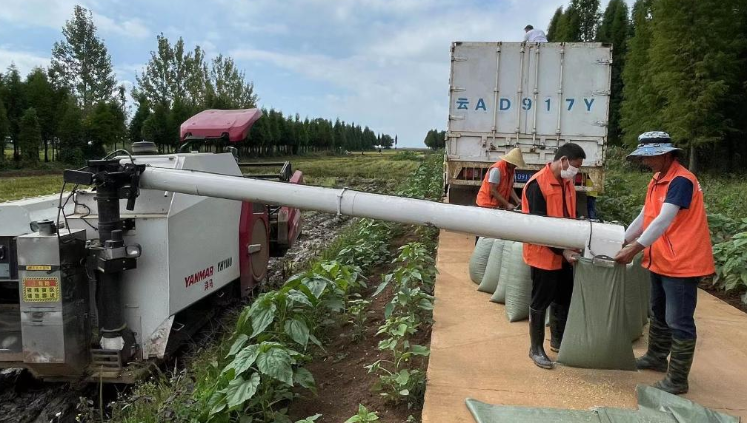
Rice achieves a bountiful harvest at the Qishan Ecological Agriculture Demonstration Zone in Kunming. [Photo by Yang Jin/Xinhua]
2. Strengthening Arable Land Protection and Quality Enhancement
Ye Xingqing emphasized that arable land is the most important production factor in agriculture. China must safeguard its red line of 1.865 billion mu of arable land. Simultaneously, measures such as constructing high-standard farmland, integrating agriculture with animal husbandry, and motivating farmers to use organic fertilizers are being implemented to enhance the quality of arable land.
3. Promoting Agricultural Technological Progress
Advancements in agricultural technology are key to boosting agricultural productivity. Ye Xingqing noted that progress in China’s agricultural science and technology primarily requires innovations in both the seed industry and agricultural machinery. Seed industry innovations should not only improve grain yield per unit area and quality but also reduce carbon emissions, enhance climate change resilience,
facilitate processing and storage for freshness, and align with modern agricultural machinery. In parallel, advances in agricultural machinery are critical for increasing labor productivity and meeting the diverse needs of Chinese agriculture, particularly for small-scale farming and hilly regions.
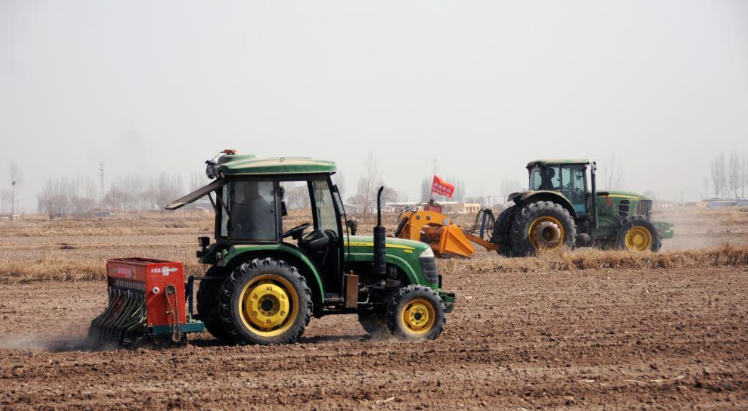
Farmers in Inner Mongolia use a Beidou navigation seeder to plant wheat. [Photo by Li Yunping/Xinhua]
4. Enhancing Agricultural Disaster Prevention and Mitigation Capacity
With global climate change and the frequent occurrence of extreme weather events, strengthening the capacity for agricultural disaster prevention and mitigation has become essential for ensuring stable grain production and supply. Ye Xingqing stated that by upgrading rural infrastructure, enhancing drainage and irrigation systems, promoting efficient dryland water-saving technologies, and refining agricultural insurance policies, farmers’ resilience to natural disasters can be significantly improved.
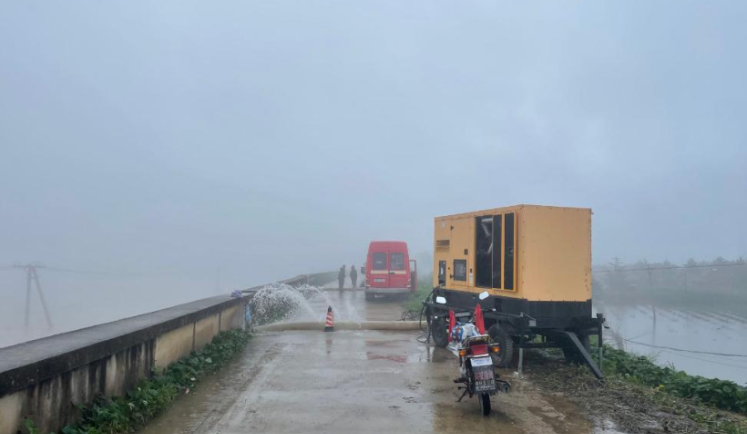
In Wangjiang Village, Dandong City, Liaoning Province, a water pump is used to drain accumulated water from farmland. [Photo by Wu Jiangmin/Xinhua]
5. Improving the Policy Support System for Grain Production
Support policies for grain production are vital tools for stabilizing production and ensuring supply. Ye Xingqing pointed out that agricultural development requires an integrated policy support system encompassing pricing, subsidies, and insurance. This year’s No. 1 Central Document calls for further improvements to the minimum purchase price mechanism for rice and wheat, increased subsidies for environmentally friendly, low-carbon, and high-quality agricultural products, and the establishment of a robust agricultural insurance system that implements full-cost and planting income insurance for the three major crops—rice, wheat, and corn—across the nation.
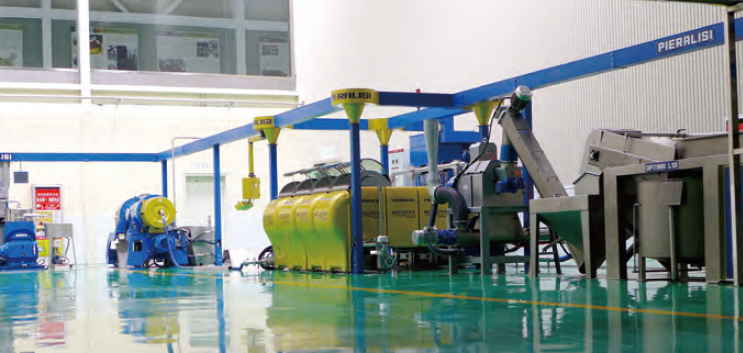
Olive Processing Line [Photo source: IPRCC]
6. Constructing a Diversified Food Supply System
The document proposes constructing a diversified food supply system by developing food resources from multiple dimensions and through various channels. Ye Xingqing noted that while China’s arable land is extremely valuable for enhancing grain production, it is equally important to develop additional food sources outside of traditional farmland. This strategy involves harnessing resources from grasslands, rivers, lakes, seas, plant factories, and facility agriculture. For instance, by transforming low-yield woody oil crops, it is possible to improve their yield per unit area and thereby expand the domestic supply of edible vegetable oils.
7. Establishing a Long-term Mechanism for Grain and Food Conservation
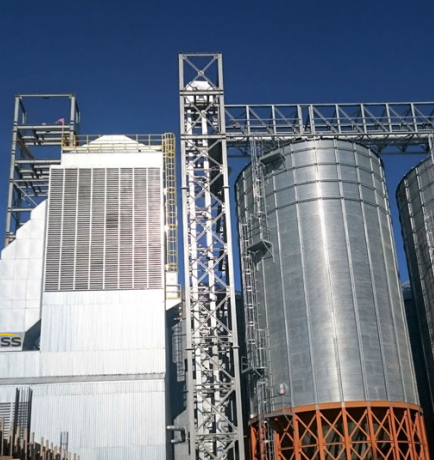
Grain drying system [Photo source: Wuxi Grain Group Co., Ltd.]
Cherishing grain is a critical approach to ensuring food security. The document calls for the establishment of a long-term mechanism for grain and food conservation. Ye Xingqing emphasized that reducing grain loss and waste should be approached from both technical and public awareness perspectives. Technically, improvements in storage facilities, transportation methods, and feed conversion efficiency can reduce grain losses; in terms of public awareness, fostering a societal ethos of grain conservation is essential to minimize wastage at the dining table.
Editor's Note: English versions of reports and other files are for reference only; official Chinese versions shall prevail in case of inconsistency. The WFP-China South-South Cooperation Knowledge Sharing Platform shall not be liable for any problems or difficulties that arise from the direct or indirect use, reproduction, or retransmission of the information contained in English versions.
References:
1. Original text of the 2025 No. 1 Central Document (Chinese Version)
2. China outlines key tasks for rural reforms, revitalization in ‘No.1 central document’
3. https://www.bjnews.com.cn/detail/1739263621129372.html
Related links:
• “Food-Gas Cycle” Boosting the Sustainable Food Production
• Agrifood System Carbon Emissions and Reduction Policy: Insights from China and Africa

